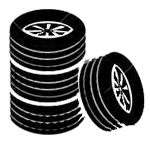What is a dogbox?
Similar Questions:
What is the difference between syncromesh and dogbox transmissions.
Dog Box Transmissions
Dog engagement is normally used in racing applications where fast, precise shifting is needed. Dog gear engagement is facilitated by numerous large teeth (dogs) that mate into matching openings machined into the opposite surface of the drive gear. Unlike the synchro engagement, there is no synchronizing mechanism to assist in equalizing speed. Ideal gear selection—e.g. minimal clashing and wear of the dog rings—is achieved by quick shifts; the motto here is “the quicker the better”, so bang away.
Synchromesh Transmissions
Most modern cars are fitted with a synchronized engagement gearbox from the factory to deliver smooth, reliable, and quiet operation, which is paramount for a daily driven vehicle. Synchromesh transmissions operate using a collar that applies force to a cone-shaped clutch attached to the gear. The collar allows the shaft speed of the gearset and the input shaft to be matched or “synched” to the output shaft prior to the collar locking into place and initiating a shift.
Synchromesh gear engagement is best at lower engine speeds and requires a bit more time compared to a dog box, to facilitate shifts. Limitations of synchromesh gearboxes in high-performance applications include slow upshifting at very high engine speeds—e.g. 9,000 rpm—and slow downshifting, as well as the need to fully use the clutch.
Full article here: Gearbox Beatdown - Synchromesh vs. Dog Box
QA #476
Last Updated:
2016-06-02 05:16







